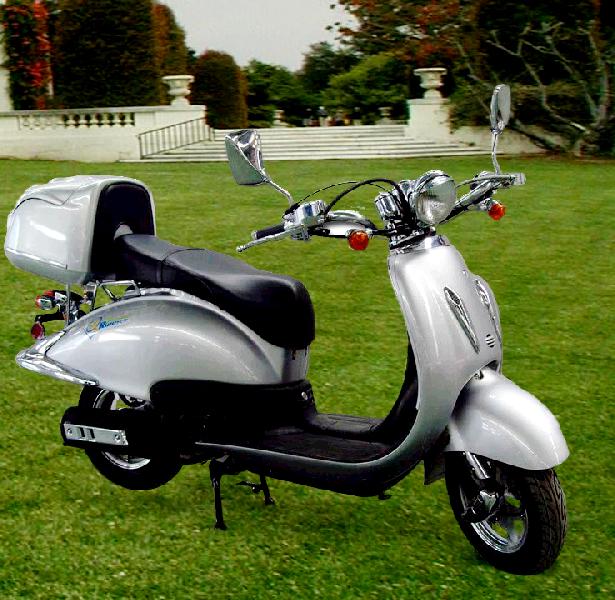Motor Scooters and Potholes
Site Map
What's New
Features
Scooters from Amazon.comYes Man, Scooters in Film
Larry Crowne and scootering
Helmet Free scootering
Scooters in a failing economy
Scooter Economy
Scooter ROI Analysis
Scooter pays for itself
Types of Motorscooters
Why ride a scooter?
Motorscooter FAQ
Buying Scooters Online
Join Our Mailing List
Recommend this site
Scooter Inspiration
Scooter EconomyMotorscooter Advantages
Motorscooter Disadvantages
Motorscooter Books
Motor Scooter Poetry
Business Scooter Travel
Motorscooter Posters
Motorscooters in California
Scooting in the UK
Green Scooting in China
Scooting in Italy
Motorscooters in Iraq
Motor Scooter History
The Ice-Cream Scooter
Pets and Motorscooters
RVs and Motorscooters
Gas vs. Electric Scooters?
Put-putting Pleasures
Recommended Scooters
Scooter Culture
Larry Crowne (film)
Dating and Scooter Culture
Motorscooter Freedom
Motor Scooter Image
Scooter Lib
Back to School on a scooter
Motor Scooter Music
Motorscooter Camping
Types of Motorscooters
Classic Motor ScootersItalian Motor Scooters
The Vespa Motorscooter
The Aprilia Motorscooter
Falcon Electric Scooters
50cc Motorscooters
Kymco Motorscooters
GT Chaunl Scooters
Chinese Motor Scooters
TANK Motorscooters
The RoadRunner Scooter
Roketa Motorscooters
The I-scooter
Moped Scooters
Mopeds
Scooter Choices
Best Scooter DealsThe Performance Scooter
The Luxury Scooter
The Minimalist Scooter
The Classic Scooter
The Basic Scooter
The I-scooter
The Electric Scooter
Stand-up Scooters
The Mobility Scooter
Used Motorscooters
California Legal Scooters
Toy Scooters
Practical matters
Trouble starting a scooterScooters and the Environment
Scooter Return On Investment Analysis
Motor Scooter Repair
The Scooter Commute
Scooter Repair Shops
Scooter Replacement Parts
Vespa Repair
Scheduled Maintenance
Fuel Efficient Driving
Essential Scooterist Kit
Passengers on a Scooter
Motor Scooter parking
Using the Kick Starter
Motor Scooter Batteries
Motor Scooter Stands
Rotating a Scooter
Cargo Storage Issues
Chinese Scooter Alarms
Scooter Roadside Assistance
Affordable Insurance
Scootering in groups
Motorscooter safety
Motorscooter SafetyDriving a Motorscooter
MSF Manual: Your Scooter
Scooters and Potholes
Important, before you drive
Motorscooter Helmets
All-weather Scootering
The Oily Path of Safety
Motorscooter Journal
Motorscooter JournalOff-highway scooter routes
The Scooterdoc
Scooter Choice Ethics
India Shuns Scooters
Left-handed Motorscooters
Other Types of Scooters
Mobility ScootersScooter-inspired Vehicles
Electric Motorscooters
The Three-wheel Scooter

Vespa Service In
Southern California
The Pothole -- a serious bain to the scooterist

makes potholes a major hazard.
Potholes, just a minor bump for cars and not a serious hazard for large-wheeled motorcycles and even bicycles, can be a very serious problem for scooterists whose wheels can be quite tiny. If one's wheel goes right down into a the hole at any speed, unjury and damage are almost certain. On several occasions, a pothole has appeared too rapidly to avoid but fortunately, the tire can skip over a fairly short pothole without getting trapped. A larger one is much more serious.
Road Hazards and following distance
Everyone knows and presumably follows the safe following distance guidelines, often described as three seconds of space between you had the vehicle ahead, the theory being that if the car ahead of you suddenly comes to a stop, three seconds should be long enough for you to reac and apply breaks fast enough to avoid colliding. However, the potential of dangers upon the surface of the road adds another dimmension. If, when following a vehicle at a safe distance, a large hole emerges from under that vehicle (or perhaps a two-by-four, a brick, a rugby helmet, a melon), how much time would you need in order to avoid it safely? One cannot just flick the wheel suddenly to the side as one can in a car. Three seconds is probably not enough.
Following distance and night driving
Driving scooter at night is more dangerous yet if your headlights do not show clearly enough road to stop or swerve in safely. Add to that a vehicle in front which obscures the view of a dangerous road obstacle until just before you are upon it, and there are some serious issues to be considered. Bottom line: drive no faster than a speed at which you can stop, slow, or evade upcoming hazards in that window of time from when they appear until your wheel encounters them. This may mean going quite slowly at night and leaving much more than three seconds between you and the car in front. Try watching a spot upon the road from the time you see it and can react to it until you reach it, and try simulating evasive maneuvers. Common sense will tell you whether it works or not. The scooterist must also exercise constant vigilance in watching out for road surface degredation.
Bookmark this page to:

